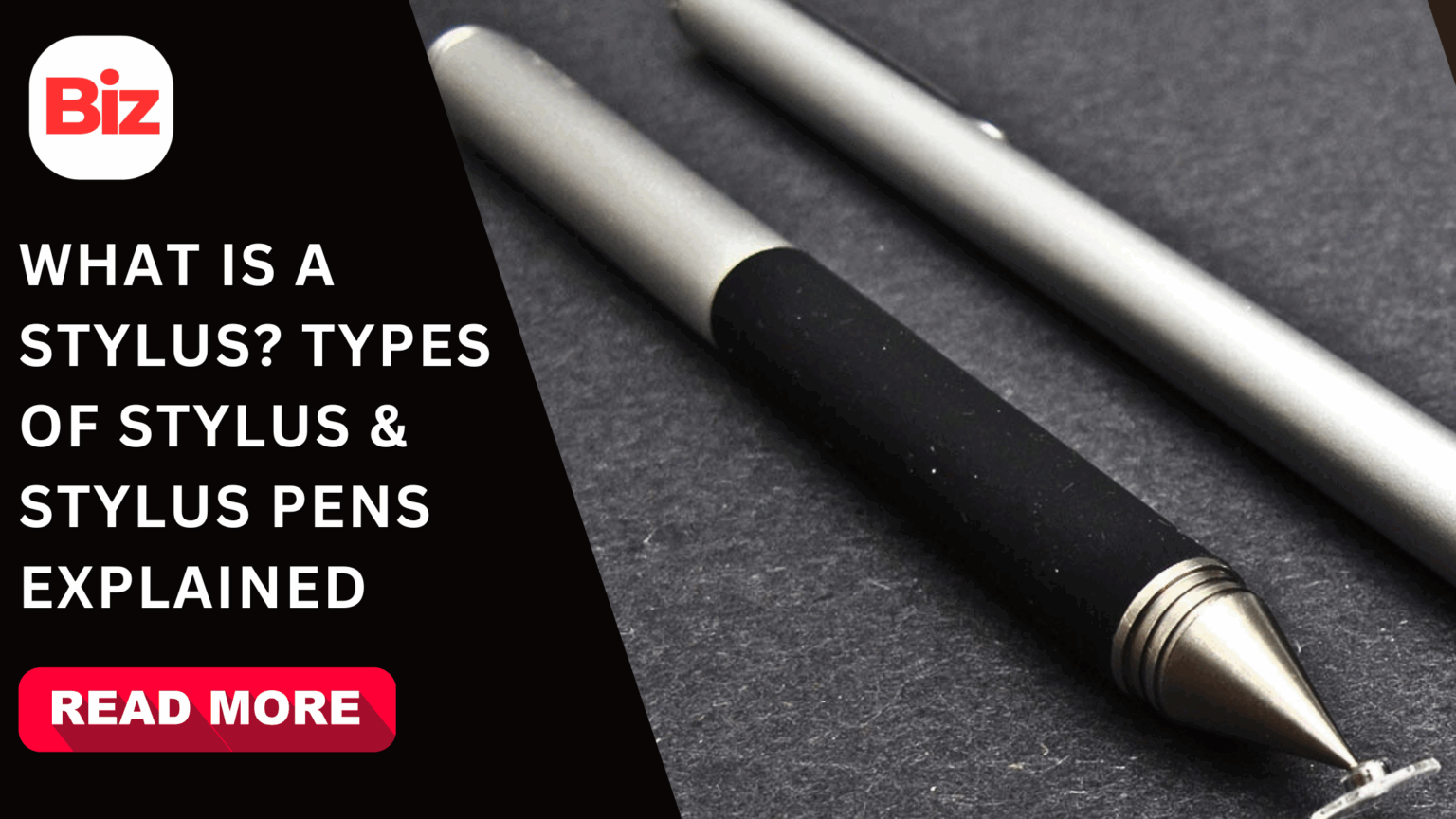What exactly is a stylus? Why is everyone talking about it? Whether you call it a stylus, stylus pen, or tablet pen, it’s simply a pen-like tool designed to point, swipe, sign, and draw on touchscreens. It’s basically a pen-shaped tool made to point, swipe, sign, and draw on touch screens. If you ever yearned for more precision than your finger can provide, the stylus is your answer. Let’s dig into everything you need to know about this contemporary (and rather archaic) writing instrument.
Types of Stylus
New styluses are typically conductive rubber or foam and are of two kinds: active stylus and passive stylus (or capacitive).
Active Stylus
These pen has electronic elements within and functions exactly as a digital pen. It typically includes features like:
- Pressure sensitivity for varying line thickness
- Palm rejection so your hand will not interfere
- Built-in memory or erasers
Due to these advanced features, active stylus pens are typically slightly larger than passive ones.
Passive/Capacitive Stylus
A passive stylus (or capacitive stylus) does not involve electronics. Rather, it merely simulates your finger touch. Though it is not pressure-sensitive, it is compatible with nearly any touchscreen device. If your phone or tablet accepts your finger, a passive stylus will also work.
What is a Stylus Pen?
The style pen most commonly means an active stylus or a passive stylus paired with a standard ink pen. Most designs feature:
- A two-sided stylus pen (stylus on one side, ink pen on the other)
- A combination stylus pen where the tip of the ink pen is extended through the stylus tip
- This makes it a handy 2-in-1 device for both writing on paper and tapping your touchscreen.
A Brief History of the Stylus
While the tablet pen looks cutting-edge, the stylus has existed for millennia. In approximately 3,000 BCE, the Sumerians carved symbols onto clay tablets using reed styluses to produce one of the world’s oldest writing systems. Through history, styluses were crafted from such materials as bone, ivory, metal, feathers, and wood.
Flash forward to the present, and the stylus pen continues to do the very same thing: assist us in writing, drawing, and communicating—just now on digital screens rather than on clay.
Customizing Your Stylus Pen
These pens are not only convenient; they’re also an excellent way to promote your brand. A capacitive stylus pen can be printed with your company name, slogan, or message. Since they are compatible with nearly every touchscreen, they are ideal giveaways, putting your brand in front of customers every day.
What is a Stylus Pen Used For?
So, what do you use a stylus pen for? Well, they are not just used for artists. They serve several purposes, even in daily life.
Drawing
Different artists are the target market for most graphic tablet and stylus pen makers, and rightly so. Making art can be costly because the materials and tools don’t grow on trees, let alone carrying and setting up all the equipment when you are working outdoors. Now you can substitute everything with a portable device and drawing stylus pen that accompanies it.
Whether you’re looking to make an oil painting or a graphic design for a company, you can do it all from the same device. That being said, you don’t need to think of yourself as an artist in order to make art. It doesn’t have to be work, as art is very therapeutic.
Writing
Always fantasized about being a digital nomad? The most typical occupations for digital nomads are blogging, affiliate marketing, and content writing, all of which require writing.
Whether you are used to writing on a mobile phone or a tablet, the touch-screen pen can enhance the accuracy and speed of writing, particularly when combined with a swipe keyboard.
Emails
Quicker writing will be helpful while writing emails. We are accustomed to viewing our emails on our cell phones, and reading from small screens becomes frustrating. Having a stylus pen for Android or an iPhone will be a game saver.
Games
Not all things can be work-related. Playing mobile games with a touchscreen pen does make a difference. You won’t keep dying or losing soldiers because of a misclick on the phone anymore.
Hygiene
Most users don’t sanitize their cellphones or tablets, and they can easily be a breeding ground for bacteria. Touchscreen pens reduce any kind of bacterial or germ infection to a great extent, and it also keep all the oil stains off. It only needs to be sanitized from time to time with the stylus pen tip.
Weather
With a wet hand to use any touchscreen gadget, the desired reaction is usually not achieved, and it’s even worse when we wear gloves. Sure, there are winter gloves that support touchscreens, but their use still leads to misclicking. The answer to both issues is easy: a touchscreen pen.
Wrapping Up
There are 5.32 billion mobile phone users as of today, and the majority of mobile phones have a touchscreen. This excludes tablets, drawing tablets, and other touch-screen devices. They all support the universal stylus pen.
Although it is a fact that all of us do not require a these pen, it remains a useful gadget to keep handy. It is compact enough to carry along and handy to use when required.
Rather than posing the question, “what is a stylus pen?” we need to pose the question, “what is the function of a stylus pen?” For some, a stylus pen is nothing but a work tool. But to others, it’s the means to making digital existence more manageable.
FAQs
1. Is a stylus pen better than a finger?
Yes! It’s more precise, smoother, and feels like writing with a real pen.
2. Can we use any stylus on my device?
Not always—some tablets need specific pens, like the Apple Pencil.
3. Do stylus pens need charging?
Basic ones don’t, but advanced tablet pens with extra features usually do.
4. Is a stylus good for students?
Definitely! It makes note-taking, highlighting, and sketching much easier.
5. Are stylus pens only for artists?
No—anyone can use them for signing, browsing, or working more neatly.








